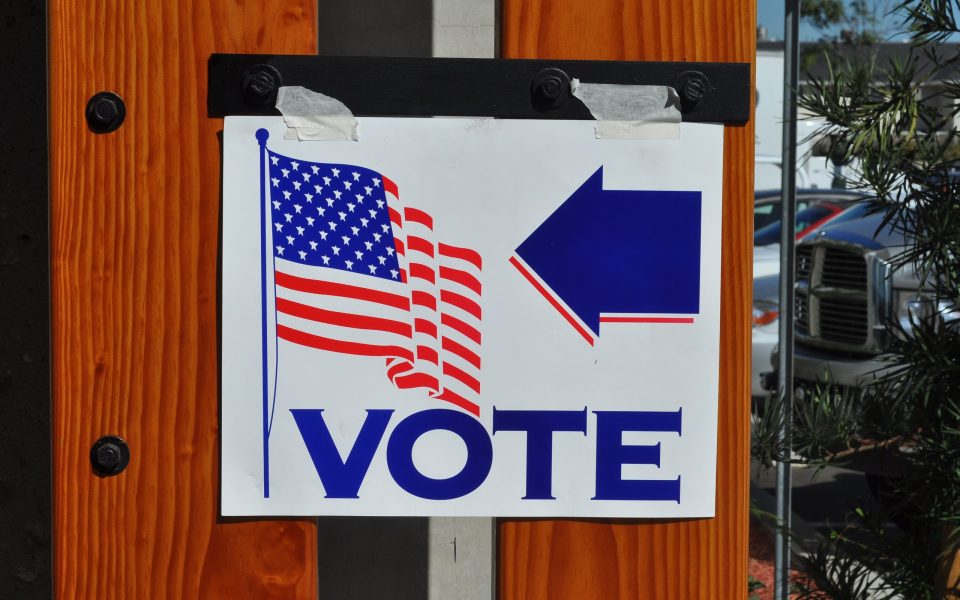With less than a week until Election Day, close to half of all registered voters in Guilford and Forsyth counties have already voted in the election. The data shows that 49.7 percent of voters in Forsyth had voted and 49.8 percent had voted in Guilford as of Wednesday at noon. Across the state, record voter turnout has been seen in both absentee ballots as well as early voting sites.
Record turnout leading up to Election Day
This year, 544,000 voters across the state cast their ballots by mail prior to Oct. 15, which was the first day of early voting for North Carolina. In 2016, just 1 percent of this year’s voters — approximately 55,000 voters — opted to vote by mail prior to Oct. 19.
“We’re experiencing record turnout just with not just absentee votes but with in-person early voting as well,” said Tim Tsujii, the election director of Forsyth county. “That in and of itself exemplifies the excitement of this election.”
So far this election cycle, 71 percent of the total number of ballots cast in Forsyth county during the 2016 election have already been cast for this election cycle as of early Tuesday morning. For Guilford county, 69 percent of the totals from 2016 have already been cast. Nationwide, voters have cast 51.6 percent of the total votes counted in the 2016 election.

Registered Democrats have cast more ballots leading up to Election Day than Republicans. In Forsyth County, Democrats made up 43.7 percent of absentee ballots compared to 28.7 percent of Republicans as of Monday. In Guilford County, similar percentages could be seen for early-voting numbers. Democrats made up 47.2 percent of voters who opted to early vote while Republicans accounted for just 27.6 percent. However, an analysis by Michael Bitzer, a Catawba College political science professor, in an Oct. 24 post for Old North State Politics, found that “looking at the two vote methods and the overall numbers, registered Democrats have an advantage, but in the past few days, registered Republicans have been increasing their share of in-person voting, especially.”
However, party affiliation does not strictly signify that the person voted for the candidate of their registered party, according to an analysis by FiveThirtyEight.
“A voter’s party registration is a strong indicator of who they’ll support, but it’s not a guarantee,” the website’s article states.
Bitzer also wrote in the article that the “phenomenon of North Carolina older (Boomer or Silent generations), white, typically male, rural or surrounding suburban county voters who are registered Democratic but are, in fact, Republican voters,” may also skew party affiliation data.
Unaffiliated voters may hold the key
The FiveThirtyEight piece also makes the case that in states such as in North Carolina, where individuals can register as independent or unaffiliated, knowing which party has the advantage can be more difficult. In Guilford county, 24.9 percent of those who have already early voted were unaffiliated. In Forsyth county, 27.1 percent of absentee voters were also unaffiliated, just behind the 28.7 percent of registered Republicans who voted the same way. According to data from the State Board of Elections, there are more unaffiliated voters than Republican voters in the state currently, a marked difference since the 2016 election when there were about 20,000 more Republican voters than unaffiliated.
According to state data by Carolina Demography, a population estimate program at UNC-Chapel Hill’s Carolina Population Center, younger voters — especially those between the ages of 18-34 — are more likely to register as unaffiliated. Unaffiliated voters are also more likely to be white and many moved here from another state. An article by the News & Observer attempts to clarify which party unaffiliated voters are more likely to vote for, but the answer remains unclear. One analyst, Republican strategist Paul Shumaker, is quoted as saying that unaffiliated voters tend to be right-leaning moderates who are more liberal on social issues but conservative on economics. However, William Busa, another political analyst, said in the piece that unaffiliated voters have started moving significantly to the left in the last 10 years. Bitzer states in the N&O article that about a third of the unaffiliated ballots cast so far have been by people under the age of 40, who typically tend to be “overwhelmingly Democratic” and of those who already voted, close to 70 percent chose to vote Democratic in the March primaries.
On younger voters and voters of color
According to data from the Center for Information and Research on Civil Learning and Engagement, younger voters are turning out in record numbers across the state.
As of Oct. 23, the center found that 331,900 early votes cast in North Carolina were by individuals between the ages of 18 and 29. For the same time frame in 2016, that number was just 88,600 — a little more than a quarter of this year’s numbers. The data signified that in North Carolina, “votes cast by youth have already exceeded the 2016 margin of victory.”
In the 2016 presidential election, Donald Trump won North Carolina by just 3.6 percent points.
A national poll from September by the Institute of Politics at Harvard found that 63 percent of young Americans would vote for Biden over Trump. Another survey by Axios found that 64 percent of voters aged 18 to 24 stated they would support Biden.
Younger voters of color also tend to support Biden over Trump.
According to a Wall Street Journal poll from September, 75 percent of younger voters of color said they supported Biden over Trump. Younger white voters also tend to prefer Biden but to a lesser extent than other racial blocs.
Given that younger voters tend to trend more left as do voters of color, these statistics are not surprising.
Nationally in 2016, both Black and Latinx voters chose Hillary Clinton over Trump by wide margins — 80 points and 36 points, respectively, according to data analyzed by the Pew Research Center. On the state level, 89 percent of Black voters and 57 percent of Latinx voters said they voted for Clinton in exit polls for CNN and the New York Times.
On absentee voting
While the Black voting bloc makes up 46 percent of registered Democrats, data from the US Elections Project shows that 1.1 percent of North Carolina’s Black voters’ absentee ballots have been rejected as of Wednesday compared to .4 percent of white voters’ ballots. The average rejection rate is .6 percent. Several individuals interviewed previously by TCB stated that the reason for the disparity likely has to do with the voter’s experience with mail-in absentee voting.
“Minorities have not been cultivated to use absentee ballots and probably could use some instruction to make sure they do their yeoman’s best to fill out the information correctly,” said Rev. Anthony Spearman, the president of the North Carolina NAACP and a member of the Guilford County Board of Elections.
According to both Charlie Colicutt, the director of elections in Guilford County, and his Forsyth county counterpart Tim Tsujii, the biggest reason for an unapproved ballot is missing information for the witness. Absentee-voting rules were temporarily changed for the 2020 election due to the coronavirus to allow voters to have just one witness rather than the previously required two. In mid-October, ballots that had missing witness information such as an address or a signature in the wrong place, could have their ballots “cured” by filling out an affidavit. Those without a witness signature at all would have to fill out a new ballot. The deadline to request an absentee ballot in North Carolina was on Tuesday.
Due to the increased number of absentee ballot requests and the Tuesday deadline, Tsujii of the Forsyth County Board of Elections urged voters to vote in person.

“I want to convey that there are other options for voters to take,” Tsujii said in an interview.
He said those with filled out absentee ballots could drop off their ballots at any of the early-voting sites or the elections office, but to ensure that they get counted before Election Day, he urged voters to vote in person to avoid having to cure ballots if they end up having missing necessary information.
“There is a chance that voters may forget to sign the return envelope or get a witness and by the time the ballot is received, it may be too late to cure,” Tsujii said. “So, we’ve had a lot of absentee voters that had deficiencies, come to vote in person. That resolves that.”
Tsujii also emphasized that if people who initially voted by mail, whose ballots were found to be deficient, came to vote in person, their votes would only count once.
“If someone voted absentee and their ballot was counted and they came in to vote in person, the system would alert the poll worker,” Tsujii stated. “It’s also in the registration books. If they had a deficiency, we mark those ballots as pending, not approved. That’s what allows for those voters to be able to remedy that deficiency to vote in person. That absentee ballot then gets spoiled.”
To learn more about how to vote, visit the Guilford county or Forsyth county board of election websites. For additional election coverage, including our 2020 Election Guide, visit triad-city-beat.com/category/election-2020.
Join the First Amendment Society, a membership that goes directly to funding TCB‘s newsroom.
We believe that reporting can save the world.
The TCB First Amendment Society recognizes the vital role of a free, unfettered press with a bundling of local experiences designed to build community, and unique engagements with our newsroom that will help you understand, and shape, local journalism’s critical role in uplifting the people in our cities.
All revenue goes directly into the newsroom as reporters’ salaries and freelance commissions.


Leave a Reply